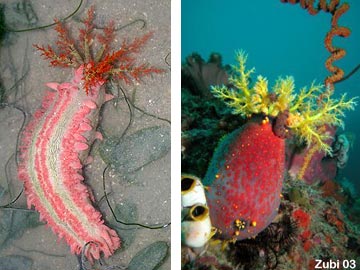
Holothuroidea
The sea cucumbers are odd-looking echinoderms with some equally odd features. They are elongated, soft bodied lacking the hard endoskeleton and spines characteristic of other echinoderms.. Like brittle stars, these animals are detritivores, performing the important ecological function of ‘mopping-up’ the dead and decaying material that falls to the ocean floor.

Sea cucumbers have a ring of tentacles surrounding the mouth which they use to feed on organic matter floating in the water or buried in the sediment.
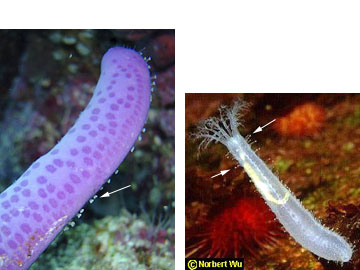
Most sea cucumbers have tube feet and a water vascular system (although highly modified). Most sea cucumbers have five rows of tube feet running the length of the body that are used for locomotion, but the Smooth Cucumber lacks tube feet and moves by contracting and expanding the body.

Sea cucumbers have also ‘lost’ the bulky endoskeleton prominent in other echinoderm groups. The skin is leathery, and remnants of the endoskeleton in the form of microscopic bony plates are embedded inside the skin tissue.
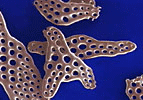
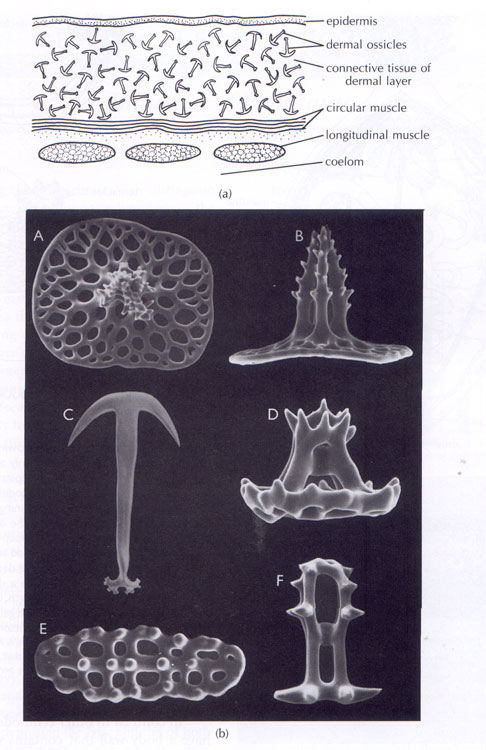
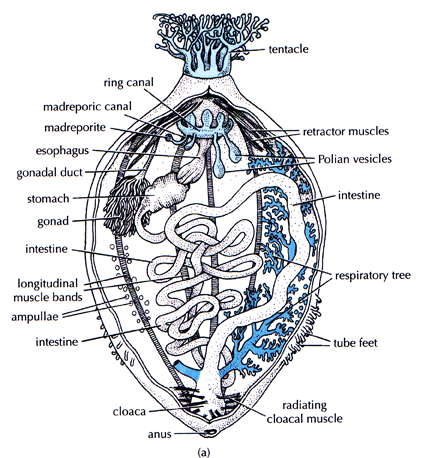
Sea cucumber defenses include powerful toxins secreted by the skin and toxic, and sticky tubes that shoot out the anus of some tropical species (tubules of Cuvier).
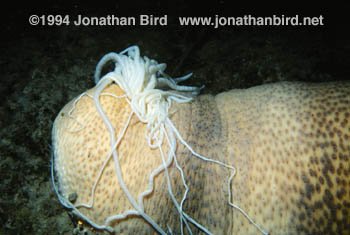
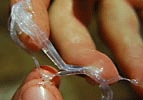
Sea cucumbers also contain substances that are of interest to the medical field. One compound (chondroitin) is beneficial in treating arthritis, while another (holothurin) has anti-viral properties and may prevent the growth of tumors. It is currently used to treat skin fungus and as an ingredient in medicines that regulate heart activity and improve metabolism. Interestingly, holothurin is a toxin that the threatened sea cucumber secretes from its anus. Pacific Islanders have long been aware of this, and use cut-up pieces of sea cucumber to kill fish in tidal pools.
Class Crinoidea
Crinoids, commonly called feather stars, are mostly found in warm tropical seas where they attach to corals and other surfaces. Unlike other echinoderm groups, the crinoid’s mouth and anus are both on the top side of the animal, facing up. The crinoid arms are used to trap minute animals and detritus from the water, an ancient filter-feeding technique. When sufficiently disturbed, crinoids may swim by an awkward movement involving an alternating flapping of the arms.
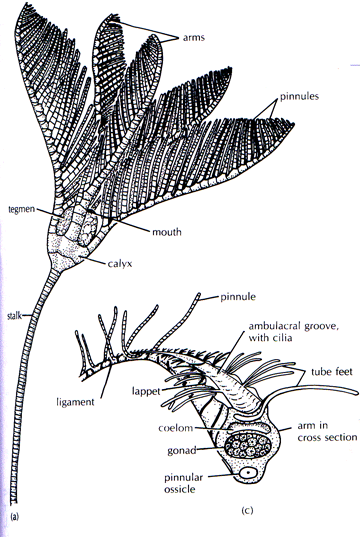
Echinoderms evolved during the earliest proliferation of animal life, well over 510 million years ago. Fossil sea cucumbers have been found in the Burgess Shales, and fossil crinoids are common in sediments dated to Devonian times and older. The class Crinoidea obviously survived until present times, but other classes did not. Paleontologists recognize at least 17 extinct classes of echinoderms. Crinoids are a small group, containing the sea lilies and feather stars.
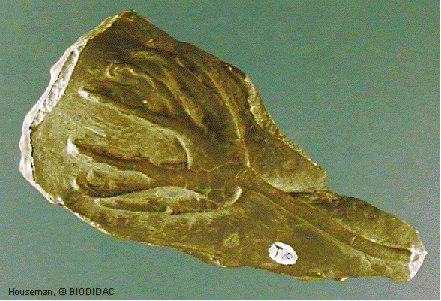
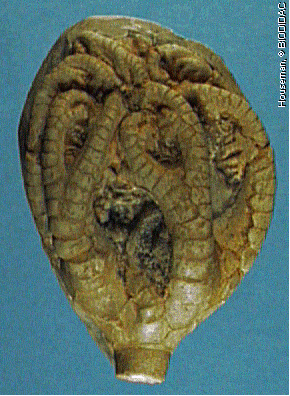
The newest class: Concentricycloid (Your book puts them in the Stelleroidea)
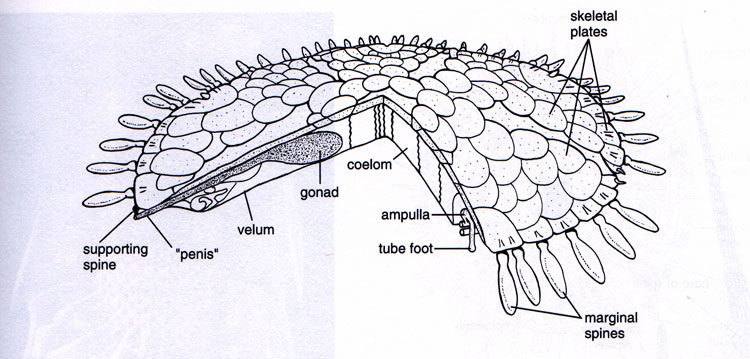
Found in wood in deep water. these are small , less than one centimeter in diameter. These animals are circular and flat, missing arms or legs but have tube feet and so definitely are echinoderms.